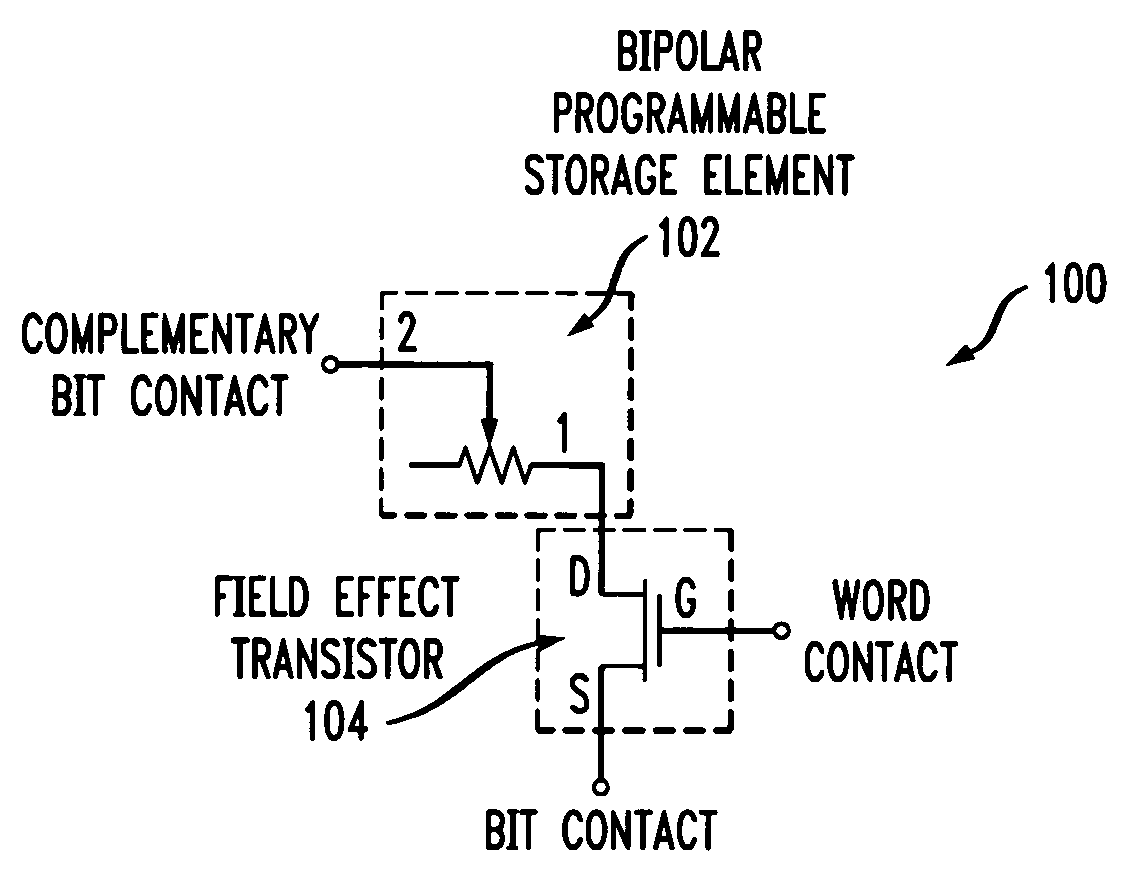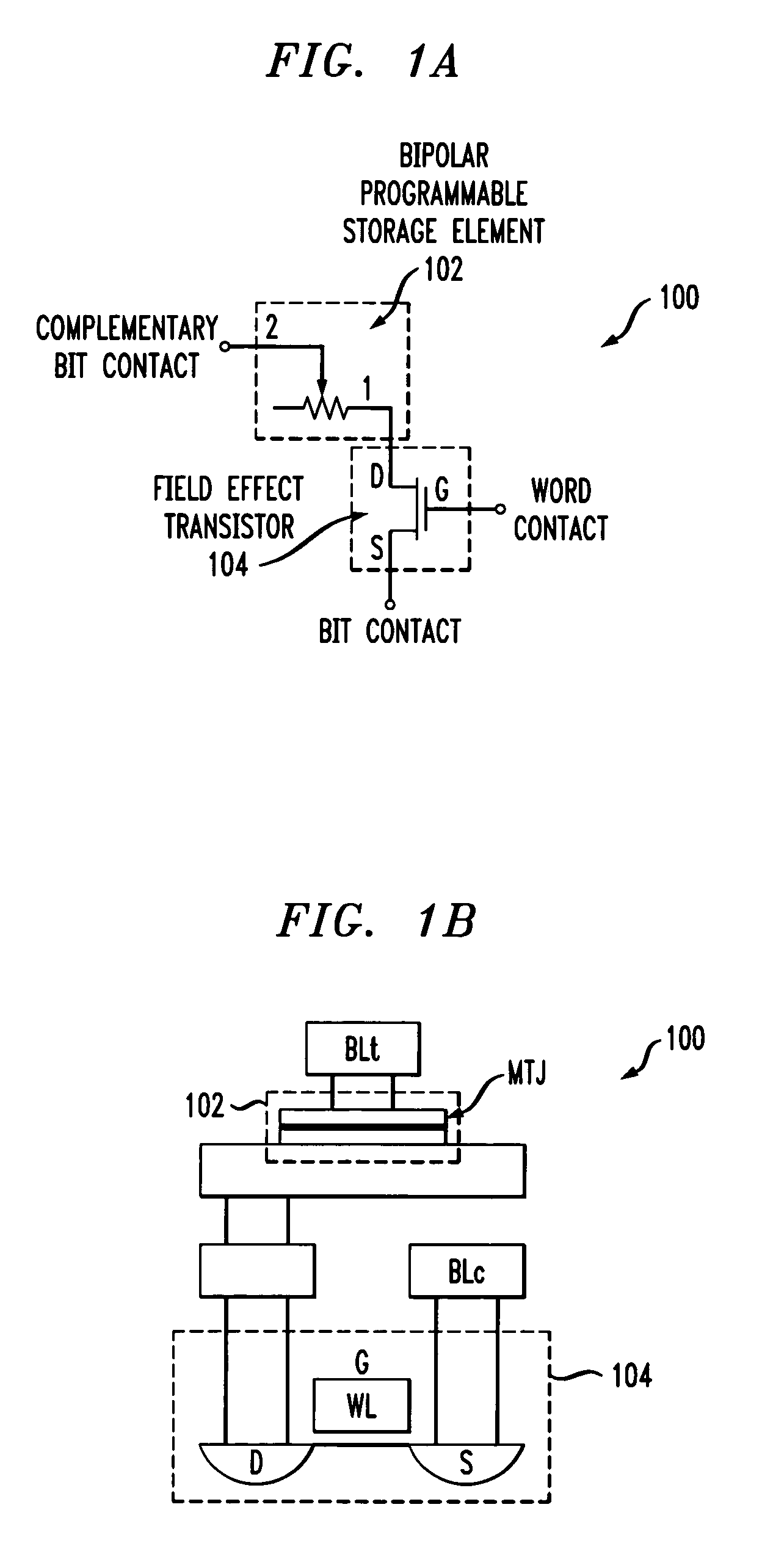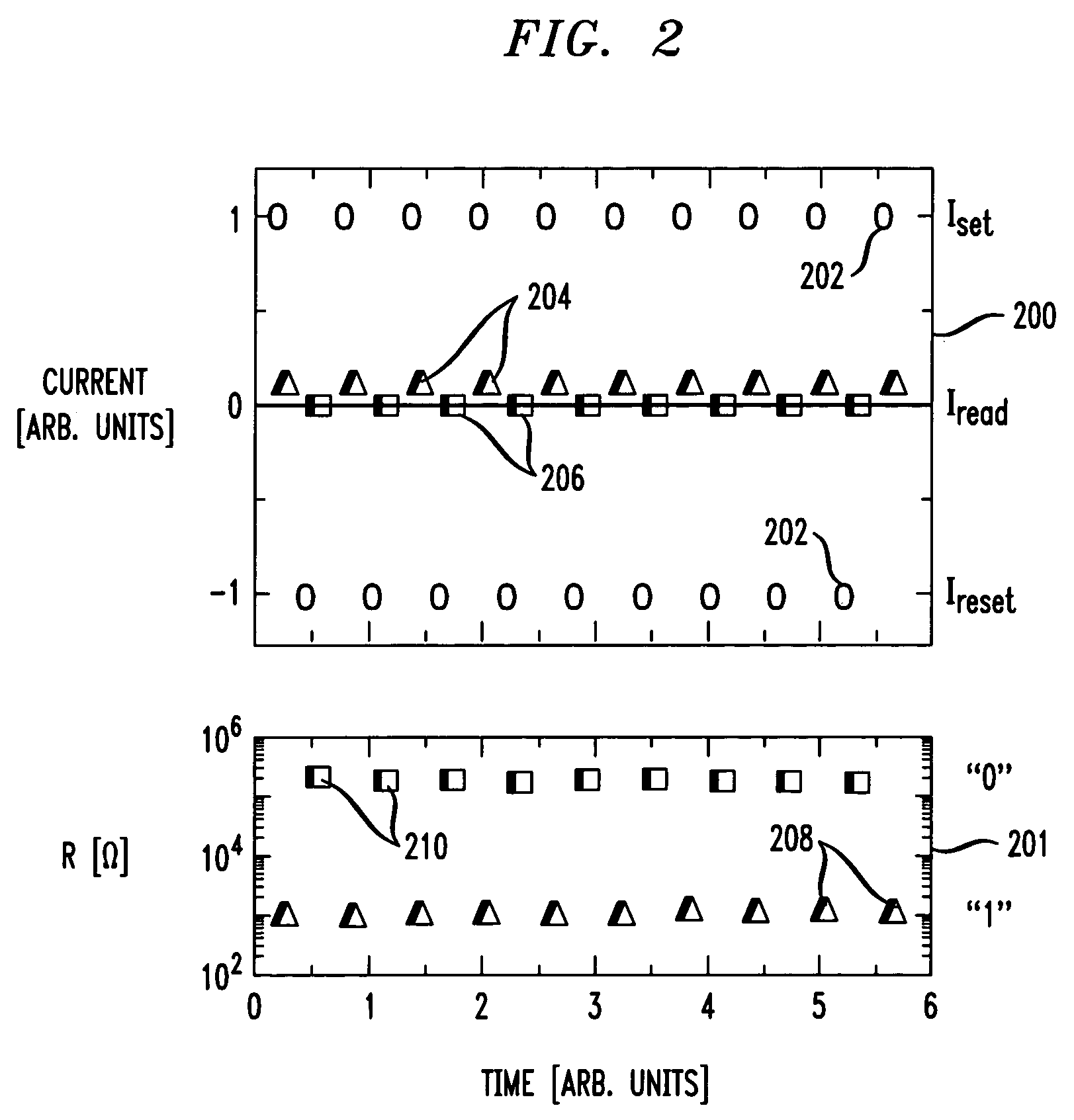Non-volatile memory architecture employing bipolar programmable resistance storage elements
a programmable resistance and memory architecture technology, applied in the field of memory devices, can solve the problems of increasing the complexity, increasing the cost of memory cells, directly proportional to memory cell size, etc., and achieves the effect of minimizing the footprint of the device, increasing the complexity of peripheral support circuits associated, and efficient memory array layou
- Summary
- Abstract
- Description
- Claims
- Application Information
AI Technical Summary
Benefits of technology
Problems solved by technology
Method used
Image
Examples
Embodiment Construction
[0015]The present invention will be described herein in the context of an illustrative nonvolatile memory cell and a memory array employing a plurality of such nonvolatile memory cells. It should be understood, however, that the present invention is not limited to these or any other particular circuit arrangements. Rather, the invention is more generally applicable to techniques for enhancing a programming performance of a nonvolatile memory array employing memory cells comprising bipolar programmable resistance elements. Although implementations of the present invention are described herein with specific reference to a metal-oxide-semiconductor (MOS) field-effect transistor (FET) device, as may be formed using a complementary metal-oxide-semiconductor (CMOS) fabrication process, it is to be understood that the invention is not limited to such transistor devices and / or such a fabrication process, and that other suitable devices, such as, for example, bipolar junction transistors (BJ...
PUM
 Login to View More
Login to View More Abstract
Description
Claims
Application Information
 Login to View More
Login to View More - R&D
- Intellectual Property
- Life Sciences
- Materials
- Tech Scout
- Unparalleled Data Quality
- Higher Quality Content
- 60% Fewer Hallucinations
Browse by: Latest US Patents, China's latest patents, Technical Efficacy Thesaurus, Application Domain, Technology Topic, Popular Technical Reports.
© 2025 PatSnap. All rights reserved.Legal|Privacy policy|Modern Slavery Act Transparency Statement|Sitemap|About US| Contact US: help@patsnap.com



